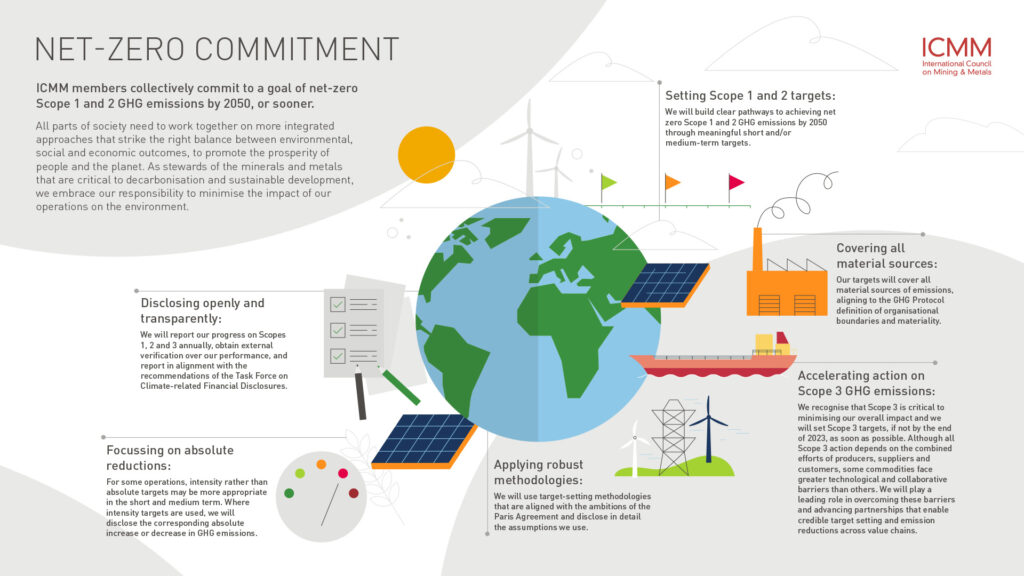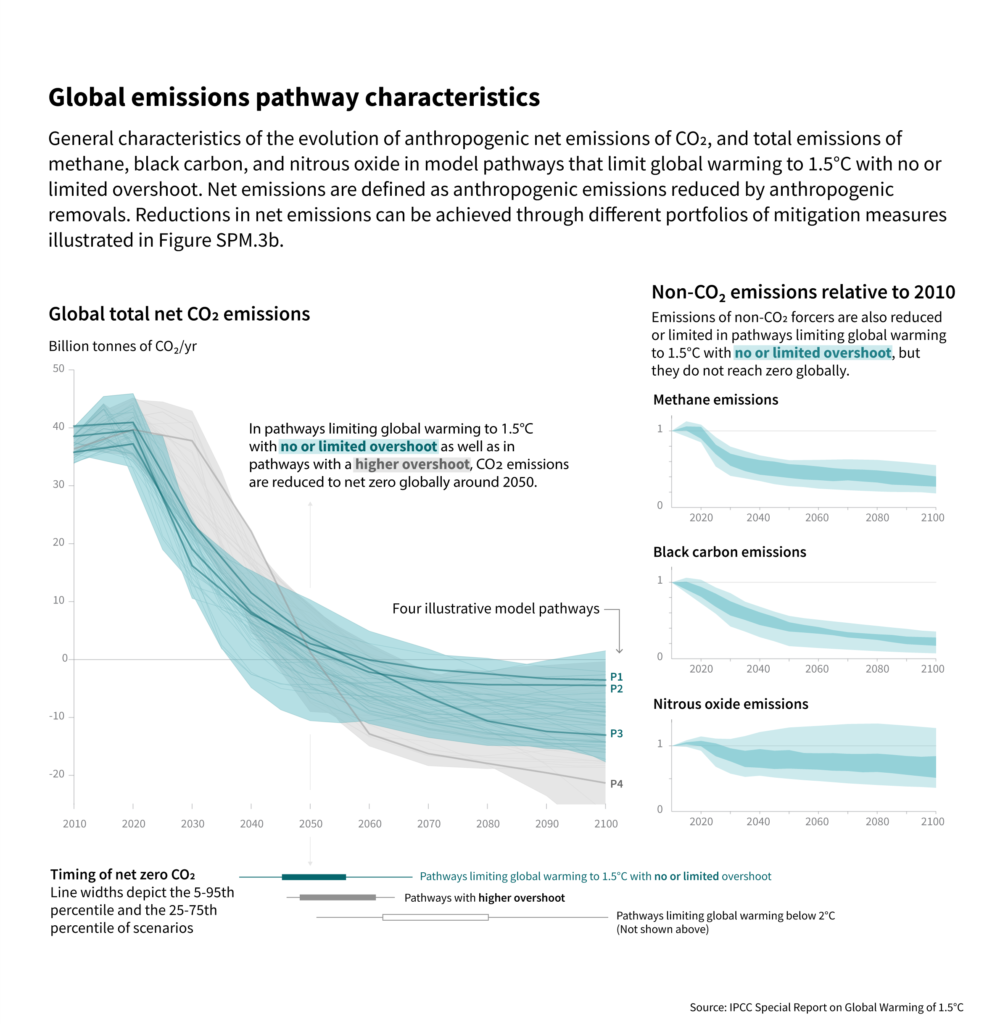What is the concept of net zero emissions?
In simple language, net zero means balancing emissions by absorbing the same amount from the atmosphere. To be more clear, it is the process through which only that amount of greenhouse gases are released which can be absorbed by the greenery so that the amount of such gases do not increase. This milestone can be achieved by two ways, either naturally where humans can restore the forest cover of the entire world by practising afforestation on a large scale, that can eventually suck CO2 out of the air. There’s another way round as well; it can be done by using technology, which captures and then stores emissions from power plants to pull out CO2 from the atmosphere.
Many countries, including the UK, have committed to moving to a net zero emissions economy. This is a response to climate science, which shows that to stop climate change, carbon emissions must be completely stopped as reducing carbon emissions is not enough. In order to reach the goal of global warming target of 1.5° C set in the Paris Agreement, the score of emissions should be almost negligible (zero) by 2050. For developed countries like the UK, the date may need to be earlier, which is why creating a net zero tolerance is important.
Why is maintaining net zero emissions important?
Scientists consider net zero to be the latest buzzword in climate action, but it is the key to protecting ourselves from harm. The United Nations Climate Science Panel stated that by 2030, anthropogenic carbon dioxide emissions should be reduced by approximately 45% from 2010 levels and reach “net zero” by 2050.
Under the 2015 Paris Agreement, nearly 200 countries have declared that they will take steps to limit the rise in global average temperature to “well below” 2 degrees Celsius compared to the pre-industrial period, and will strive to keep it at the limit higher of 1.5 degrees centigrade. But the world has warmed by around 1.1 degrees Celsius, and as emissions continue to rise, it will currently warm by at least 3 degrees Celsius in this century. Scientists say this will lead to a worsening of extreme weather and a potentially catastrophic rise in sea level, rendering certain areas of the planet uninhabitable, directly increasing hunger and migration. This, and mounting public pressure, is why more and more countries, companies, and others have pledged to reduce their global warming emissions to zero by 2050.

How to set a net zero target?
WRI and the Pathways 2050 Platform, working with governments and other agencies to meet their climate commitments, have stated that reducing emissions within national borders should be a top priority and work to offset issues that are only considered later. Currently, countries differ as to whether their net zero objectives can include offsetting emissions at the international level, such as paying for the protection of Amazonian forests.
Furthermore, according to the WRI, the target of the net zero mission should be to eliminate the effects of each greenhouse gas, which include methane, along with elimination of all other emissions coming from economic sectors and shipping and international aviation. Those countries that are trying to achieve net zero emissions should achieve this goal by 2050 or earlier, and the countries with the highest emissions should attempt to do so faster than that. WRI said it is also necessary to negotiate with those who will be affected and clearly communicate the plan to come up with a plan. The Science Targets Initiative (SBTi) stated that when it comes to businesses, the parts of the supply chain and emission sources that are covered by net zero targets are very different and difficult to compare. The initiative has issued guidelines to help remedy that.
Which countries are moving towards opting for a net zero mission?
Many countries have proposed or committed to doing so in order to achieve net zero emissions on a time scale consistent with the temperature targets of the Paris Agreement. The list of countries include the United Kingdom, Germany, France, Spain, Norway, Denmark, Switzerland, Portugal, New Zealand, Chile, Costa Rica, Sweden, Iceland, Austria, and Finland and India.
The small Himalayan kingdom of Bhutan and Suriname, the world’s most forested country, have already achieved negative carbon emissions as they absorb more carbon dioxide than they emit. Furthermore, the European Union recently agreed to include its political commitment to achieve climate neutrality by 2050 in its European Climate Law. The principle that rich countries should play a leading role in climate change problems is established in the United Nations Climate Convention dating back to 1992 and has been reaffirmed in the Paris Agreement. Therefore, if science says “achieve global net zero by the middle of this century,” then the adoption of earlier dates by developed countries is a strong moral reason.

Read More

